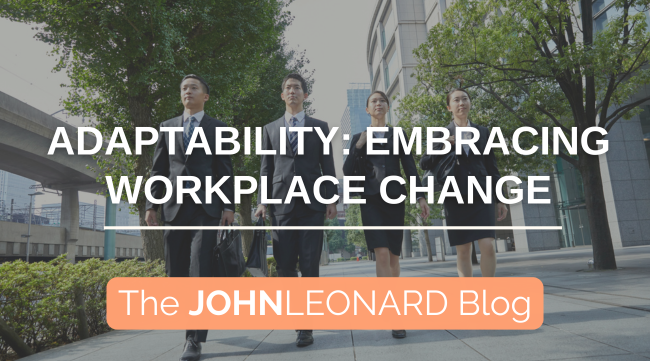
Adaptability in the workplace continues to be a critical skill for both organizations and employees. With many advances and shifts in technologies, societal trends, the economy, and more, workplaces can be left feeling nervous about reassessing their strategies and unsure of how to navigate these drastic changes. All while maintaining performance and productivity. Embracing adaptability at all levels can help you and your organization effectively navigate changing workplace dynamics.
Defining Adaptability
Adaptability is the ability to adjust and respond to new conditions, environments, and challenges. It’s one’s capability to remain flexible, willing, and proactive, seeking solutions amid change. Adaptability involves resilience, continuous learning, agility, and awareness to manage change effectively.
The Importance
Why is adaptability important in the workplace? Now more than ever, our pace of change is rapid, making adaptability more in demand for both individuals and organizations. Surges in technology, economic shifts, workforce and workplace expectations, regulatory changes, and policies are forcing us to reshape operations and adjust our approaches. This makes adaptability vital and nearly a requisite to effectively move forward in today’s business landscape. Among teams and within the workplace, adaptability can enhance:
- Problem-Solving
- Productivity
- Innovation
- Communication
- And more!
The Mindset
Before reworking organizational culture and management philosophy, it begins at the individual level by cultivating an adaptive mindset. This is important as it forces you to be willing and solution-oriented instead of fearing change. Key tactics to adopt an adaptive mindset include framing change as an opportunity, being a persistent learner, and practicing a positive and proactive attitude. These will shift how you interpret change and increase your receptive ability and reactiveness. Remember that change is not disruption but a time of redefinition and reorganization. If you adopt this mindset, you’ll be ready to embrace change and instill that among those around you.
Implementing Strategies & Culture
The next step is for organizations to embed adaptability into the core of their business operations and culture. Organizations should provide continuous learning opportunities and invest in development, as this urges teams to feel compelled to grow together, increasing preparedness. Organizations should also focus on creating a safe and encouraging environment that supports risk-taking, experimentation, and flexibility. This is important as psychological safety is key for building an adaptable team and organization.

For all organizations, leaders, and employees, moving forward in today’s dynamic world requires prioritization of adaptability. If we understand what adaptability is and how to adopt it, we can better position ourselves for the future of work. Together, we’ll feel equipped to face an uncertain future and evolving business landscape not just as a workforce but as a community.
Want more tips to optimize your workplace culture? Subscribe to The JOHNLEONARD Blog below!
